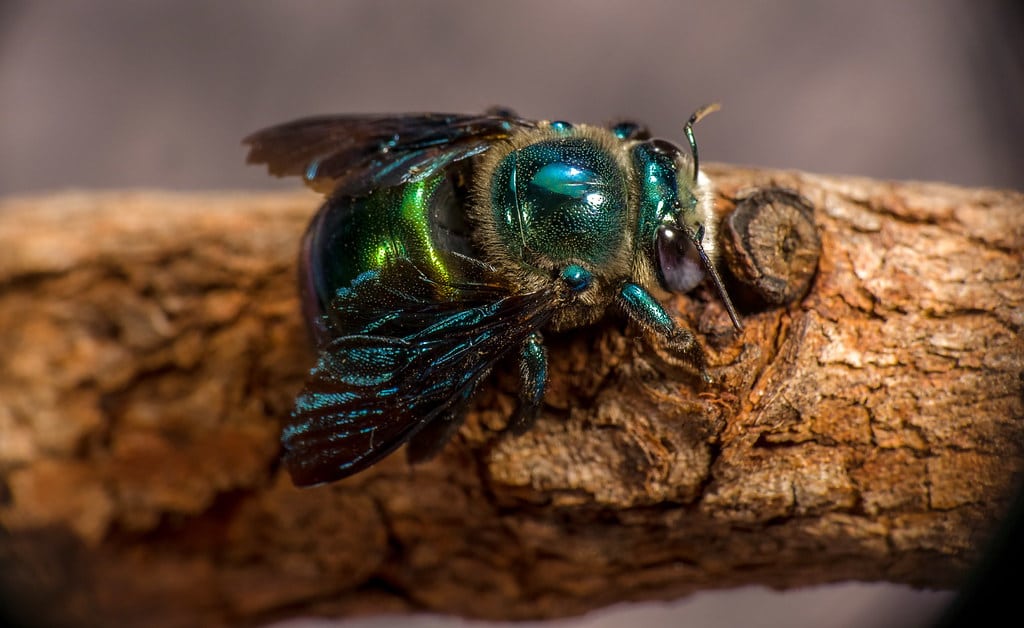The Buzz About Stingers: Do Native Australian Bees Have Them?
The Buzz About Stingers: Do Native Australian Bees Have Them?

Australia is a land of diverse and fascinating creatures, and bees are no exception. With over 1,500 native bee species buzzing around, it’s natural to wonder: Do these native Australian bees have stingers? The answer, like many things in the bee world, is not a simple yes or no.
Understanding the Sting: A Defense Mechanism
Related Articles: The Buzz About Stingers: Do Native Australian Bees Have Them?
- The Bush Rat: A Glimpse Into Australia’s Nocturnal World
- The Buzz About Bees: Why These Tiny Creatures Are Essential To Our Ecosystem
- From Didgeridoos To The Didjeridu: A Journey Through Australia’s Unique Musical Instruments
- The Flight Instinct: Why Indigenous Kangaroos Run Away From People
- A Sweet Journey: Exploring The Domesticated Fruits Of Australia
Before diving into the specifics of Australian native bees, let’s first understand the purpose of a stinger. In the world of insects, a stinger is a crucial defense mechanism. It’s a sharp, pointed structure connected to a venom sac, allowing the bee to inject venom into a perceived threat. This venom can cause pain, swelling, and even allergic reactions in humans.
The Not-So-Stinging Truth: Many Australian Native Bees Are Stingless
Contrary to popular belief, many native Australian bees are actually stingless. This might come as a surprise, considering the fearsome reputation of their European honeybee cousins. But evolution has shaped these native bees differently, equipping them with alternative defense strategies.
A Diverse World of Stingless Bees:
Here’s a closer look at some of the prominent stingless bee groups in Australia:
- Tetragonula: These small, dark bees are often referred to as "sugarbag" bees. They are known for their gentle nature and their ability to produce a delicious, thick honey.
- Austroplebeia: These bees are slightly larger than Tetragonula and are often found in coastal areas. They are also known for their honey production, but their colonies are smaller.
- Trigona: This genus includes several species, some of which are more aggressive than others. However, even the more aggressive species are less likely to sting than European honeybees.

Why Are They Stingless?
The absence of a stinger in these bees is a result of evolutionary adaptation. Stingless bees have developed alternative defense mechanisms, such as:
- Strong mandibles: These powerful jaws can be used to bite and deter attackers.
- Sticky resin: Some species use resin collected from plants to build their nests and trap intruders.
- Chemical defenses: Stingless bees can release pungent odors and chemicals to deter predators.

The Stinging Exceptions: Native Bees That Do Sting

While many native Australian bees are stingless, there are a few exceptions. Some species, such as the Australian native honeybee (Apis mellifera) and the blue-banded bee (Amegilla), do possess stingers.
- Australian Native Honeybee (Apis mellifera): This species is not native to Australia but was introduced from Europe. It is the most common bee species in Australia and is responsible for the vast majority of honey production.
- Blue-Banded Bee (Amegilla): These bees are important pollinators, and while they can sting, they are generally docile and only sting if provoked.
The Importance of Native Bees
Regardless of whether they have stingers or not, native Australian bees play a crucial role in the ecosystem. They are essential pollinators, contributing to the reproduction of a wide variety of plants, including many agricultural crops.
Protecting Our Native Bees:
The diversity and importance of native Australian bees make it vital to protect them. Here are some ways you can help:
- Plant native flowers: Provide a food source for bees by planting native plants in your garden.
- Avoid pesticides: Chemicals can harm bees and their colonies. Choose natural pest control methods whenever possible.
- Provide nesting sites: Bees need places to build their nests. You can create simple nesting boxes or leave areas of your garden undisturbed.
FAQs about Native Australian Bees and Stingers:
Q: Are all native Australian bees stingless?
A: No, not all native Australian bees are stingless. Some species, like the Australian native honeybee and the blue-banded bee, do possess stingers.
Q: Are stingless bees dangerous?
A: While stingless bees can bite with their mandibles, they are generally not considered dangerous. They are much less likely to sting than European honeybees.
Q: What should I do if I encounter a native bee?
A: Stay calm and avoid making sudden movements. If the bee is near you, gently move away from the area.
Q: How can I tell if a bee is stingless?
A: It can be difficult to tell if a bee is stingless just by looking at it. However, stingless bees are typically smaller and darker than European honeybees.
Q: Why are native bees important?
A: Native bees are essential pollinators, playing a vital role in the reproduction of many plants, including food crops.
Conclusion:
The world of native Australian bees is incredibly diverse, with many species boasting unique adaptations and playing vital roles in the ecosystem. While many native bees are stingless, some do possess stingers. Understanding the differences between these species and appreciating the importance of native bees is crucial for their conservation and the health of our environment.

Closure
Thus, we hope this article has provided valuable insights into The Buzz About Stingers: Do Native Australian Bees Have Them?. We appreciate your attention to our article. See you in our next article!